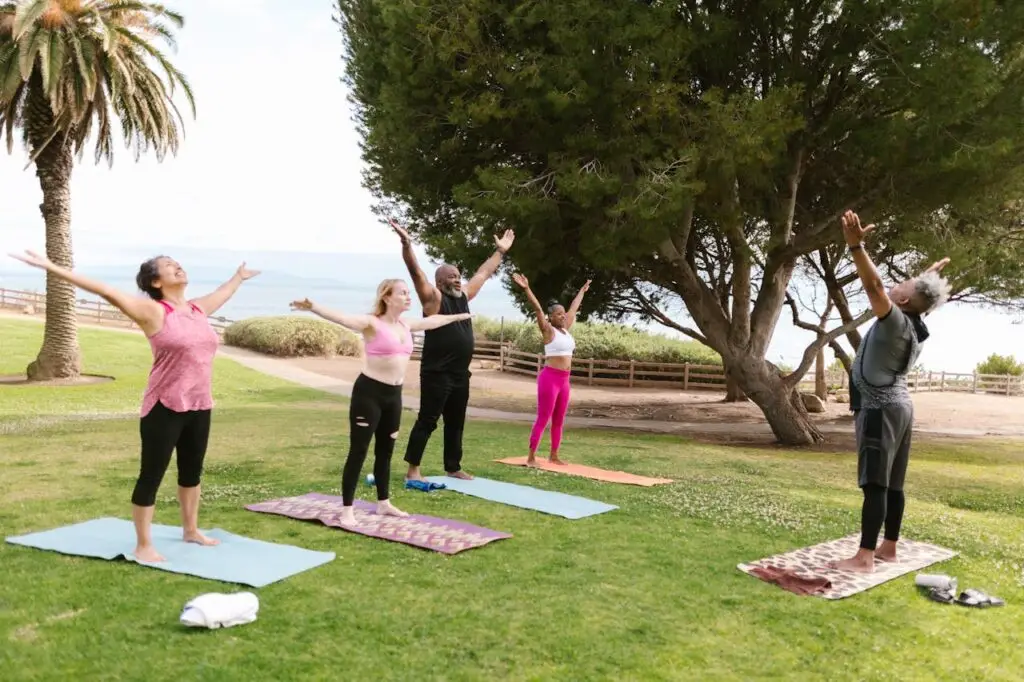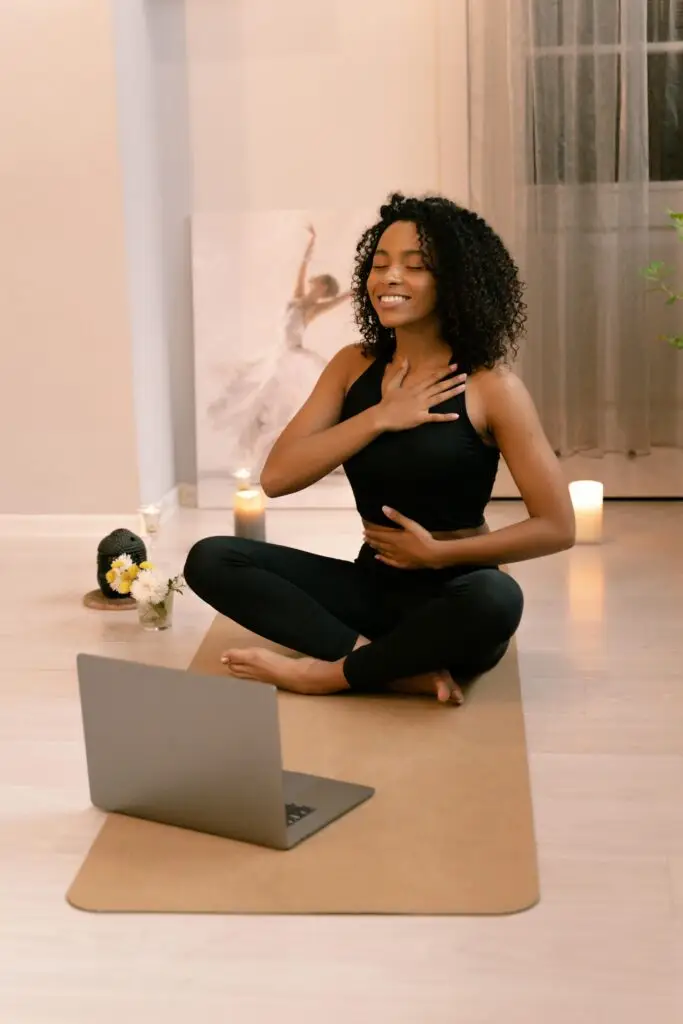
Planning your first yoga class can be both exciting and daunting. As a new yoga teacher, having a structured plan and effective strategies will help you deliver a successful class. In this article, we’ll cover essential tips and techniques to help you prepare and teach with confidence.
Understanding Your Students
Before planning your class, consider who your students are. Are they beginners or advanced practitioners? Understanding your audience helps tailor your class to meet their needs and abilities. Knowing your students’ experience levels allows you to adjust the difficulty of poses and ensures everyone feels comfortable and challenged.
Importance of Knowing Your Audience
Identifying your audience is the first step in planning a successful yoga class. If your students are beginners, focus on foundational poses and basic alignment principles. For more advanced students, incorporate complex sequences and challenging asanas. Gathering this information can be done through pre-class surveys, casual conversations, or observing their practice.
Adapting to Different Skill Levels
New yoga teachers often worry about catering to mixed-level classes. The key is to provide modifications and variations for each pose. Encourage students to listen to their bodies and practice at their own pace. Offering props like blocks, straps, and bolsters can also help accommodate different skill levels.
Setting Clear Objectives
Defining clear objectives for your yoga class is crucial for effective teaching. Whether you aim to help your students master a specific pose, increase flexibility, or find relaxation, having clear goals will guide your planning process. Clear objectives not only help you stay focused but also provide a sense of accomplishment for your students.
Creating Measurable Goals
Setting specific, measurable goals ensures that you and your students can track progress. For example, instead of a vague goal like “improving flexibility,” aim for something more specific like “enhancing hamstring flexibility through targeted poses.” This clarity helps in structuring your class effectively.
Aligning Objectives with Class Themes
Align your objectives with the theme of the class. For instance, if your class theme is “Heart Opening,” focus on poses that open the chest and shoulders. Themed classes not only make your sessions more engaging but also provide a cohesive experience for your students.
Creating a Structured Outline
A well-structured yoga class includes a warm-up, main sequence, and cool-down. Start with gentle stretches to prepare the body, then move into more challenging poses, and end with relaxation. This structure ensures a balanced and comprehensive practice that caters to all aspects of physical and mental well-being.
Warm-up: Setting the Tone
The warm-up phase is crucial for preparing the body and mind. Begin with gentle stretches and simple poses to increase blood flow and awaken the muscles. Incorporate breathing exercises (pranayama) to help students connect with their breath and center themselves.
Example Warm-up Sequence:
- Child’s Pose (Balasana) – 2 minutes
- Cat-Cow Pose (Marjaryasana-Bitilasana) – 5 rounds
- Downward-Facing Dog (Adho Mukha Svanasana) – 3 breaths
Main Sequence: Building the Practice
The main sequence is the core of your class. This section includes standing poses, balance poses, and floor exercises. Ensure a smooth flow between poses and offer modifications as needed. Balance strength-building poses with flexibility-enhancing ones for a well-rounded practice.
Example Main Sequence:
- Sun Salutation (Surya Namaskar) – 3 rounds
- Warrior I (Virabhadrasana I) – 5 breaths per side
- Triangle Pose (Trikonasana) – 5 breaths per side
- Seated Forward Bend (Paschimottanasana) – 5 breaths
Cool-down: Integrating the Practice
The cool-down phase helps students integrate their practice and prepare for relaxation. Focus on gentle stretches, twists, and restorative poses. End with a guided savasana (final relaxation) to help students absorb the benefits of their practice.
Example Cool-down Sequence:
- Supine Twist (Supta Matsyendrasana) – 5 breaths per side
- Happy Baby Pose (Ananda Balasana) – 5 breaths
- Savasana – 5-10 minutes
Using Simple and Clear Cues
Effective communication is key to guiding your students through each pose. Use simple, clear, and concise instructions to ensure everyone understands the movements. Demonstrate the poses and provide modifications for different skill levels. This approach helps create a supportive and inclusive environment.
The Art of Cueing
Clear and effective cueing involves using precise language to guide your students. Avoid jargon and keep your instructions straightforward. For example, instead of saying “engage your quadriceps,” say “firm your thighs.”
Effective Cueing Tips:
- Speak slowly and clearly.
- Use positive language (“Keep your spine long” instead of “Don’t hunch your back”).
- Offer visual and verbal cues simultaneously.
Demonstrating Poses
Demonstrations are essential, especially for complex poses. Show the pose from different angles and highlight key alignment points. Encourage students to ask questions and provide individual adjustments when necessary.
Incorporating Breathwork and Mindfulness
Integrate breathwork and mindfulness practices to enhance the overall experience of your class. Teach breathing techniques like Ujjayi breath and encourage students to stay present during the practice. Mindfulness not only enhances the physical benefits of yoga but also promotes mental clarity and relaxation.
Teaching Breathwork Techniques
Breathwork (pranayama) is a fundamental aspect of yoga. Teach simple techniques like Ujjayi breath (victorious breath) and Nadi Shodhana (alternate nostril breathing). These practices help students connect with their breath and calm their minds.
Example Breathwork Exercise:
- Ujjayi Breath: Inhale deeply through the nose, constricting the throat slightly to create an audible sound. Exhale through the nose, maintaining the same sound. Practice for 5 minutes.
Integrating Mindfulness Practices
Mindfulness involves being present and fully engaged in the moment. Encourage students to focus on their breath, sensations, and thoughts during the practice. This awareness enhances the mind-body connection and deepens the yoga experience.
Preparing for Common Challenges
Be ready to address common challenges such as students struggling with a pose or feeling anxious. Have modifications and supportive props like blocks and straps available to assist students. Being prepared for these challenges ensures a smooth and enjoyable experience for everyone.
Addressing Physical Limitations
Students may face physical limitations due to injuries or flexibility issues. Offer modifications and use props to make poses accessible. For example, if a student can’t reach the floor in Triangle Pose, suggest using a block for support.
Common Modifications:
- Use a strap in Seated Forward Bend to reach the feet.
- Place a block under the hands in Downward-Facing Dog for wrist support.
Managing Class Dynamics
Class dynamics can vary based on group energy and individual needs. Be flexible and adapt your plan if necessary. If students appear fatigued, incorporate restorative poses or extend the cool-down phase.
Gathering Feedback
After the class, ask for feedback to understand what worked and what could be improved. This helps you refine your teaching methods and better meet your students’ needs. Feedback is invaluable for your growth as a yoga teacher and helps you create more effective and engaging classes.
Methods for Collecting Feedback
Collect feedback through various methods such as verbal comments, anonymous surveys, or suggestion boxes. Encourage honest and constructive feedback to gain valuable insights.
Sample Feedback Questions:
- What did you enjoy most about the class?
- Were there any poses or sequences you found challenging?
- How can I improve your yoga experience?
Implementing Feedback
Use the feedback to make adjustments in your teaching style and class structure. Continuous improvement ensures that you provide high-quality classes that resonate with your students.
For more detailed tips on teaching yoga, check out our comprehensive Yoga Teacher Resource Guide. Additionally, explore Yoga Journal’s Guide for New Teachers for further insights.
Conclusion
Effective planning is crucial for delivering a successful yoga class. By understanding your students, setting clear objectives, creating a structured outline, and incorporating mindfulness, you can confidently lead your first class. Remember, teaching yoga is a journey, and continuous learning will help you grow as an instructor.
By following these strategies, new yoga teachers can ensure a smooth and enjoyable experience for both themselves and their students. Happy teaching!
#planning yoga class #new yoga teachers. #class preparation #teaching strategies #yoga class outline #yoga teacher tips # yoga class planning guide #beginner yoga teacher #yoga class structure #yoga teaching methods



